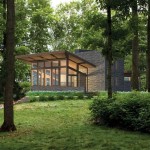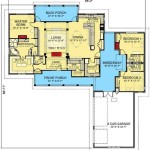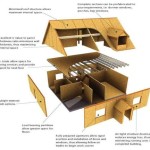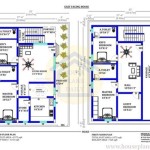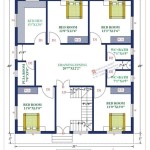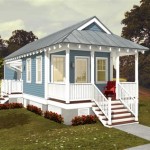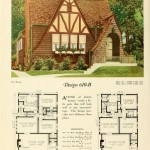Get Inspired: Explore The Floor Plans Of Victorian Houses In Canada
Victorian houses in Canada, a tangible link to a bygone era, stand as architectural testaments to a period defined by Queen Victoria's reign (1837-1901). These homes, far from being mere bricks and mortar, encapsulate a distinct aesthetic, a reflection of the social norms, technological advancements, and evolving domestic ideals prevalent at the time. Their floor plans, in particular, offer a unique window into the lives of the families who inhabited them, revealing insights into their routines, social interactions, and the very fabric of their daily existence. Delving into these intricate layouts provides an invaluable opportunity to understand not only the architectural principles of the era but also the cultural context that shaped them.
Understanding Victorian house floor plans requires appreciating the historical backdrop against which they were conceived. The Victorian era was a period of significant social and economic transformation. The Industrial Revolution brought about widespread urbanization and a burgeoning middle class. This newfound prosperity fueled a desire for larger, more elaborate homes that could showcase their owners' success and social standing. Simultaneously, advances in building technology, such as improved lumber production and the introduction of indoor plumbing and central heating, facilitated the creation of more complex and comfortable living spaces. The evolution of domestic service also profoundly influenced the design of Victorian homes, necessitating dedicated areas for servants and the management of household affairs.
Victorian floor plans are characterized by a few key features that distinguish them from architectural styles of preceding and succeeding eras. These features are largely dictated by the social and technological climates of the time. Exploring these plans allows an understanding of the design decisions used in architectural practices.
Key Features of Victorian House Floor Plans
Victorian floor plans often exhibit a pronounced sense of formality and compartmentalization. Rooms were typically designed for specific purposes and were distinctly separated from one another, creating a series of self-contained spaces. This contrasts sharply with the open-concept designs more common in contemporary homes. The layout was often symmetrical, reflecting a desire for order and balance, and included designated areas for receiving guests, dining, and engaging in private family activities. This compartmentalization catered to the social expectations of the time, where strict separation of public and private spheres was maintained.
The entry hall, or foyer, served as a crucial transitional space between the outside world and the interior of the home. It was often the largest and most elaborately decorated area, designed to make a grand first impression on visitors. From the entry hall, guests would be ushered into the parlor or drawing room, a formal space dedicated to receiving visitors and entertaining guests. This room was usually filled with plush furniture, ornate decorations, and displays of family wealth and status. The dining room was another prominent space, typically situated near the kitchen to facilitate the smooth serving of meals. This room was reserved for formal dinners and special occasions, with a large dining table as its centerpiece. Private family spaces, such as the living room and library, were generally located further away from the public areas, providing a refuge for relaxation and personal pursuits.
The kitchen, traditionally located at the rear of the house, was a bustling center of activity. It was often the domain of domestic servants, responsible for preparing meals, cleaning, and managing the household. Victorian kitchens were typically large and functional, equipped with a range of specialized tools and appliances, including wood-burning stoves, iceboxes, and pantries for food storage. The placement and design of the kitchen reflected the importance of domestic service in managing larger Victorian households. Servants frequently had separate quarters, often located in the attic or basement, further reinforcing the social hierarchy and separation of spaces within the home.
Upper floors of Victorian houses typically housed the bedrooms and bathrooms. Bedrooms were designed to be private and comfortable, providing individual spaces for family members. They were often arranged along a central hallway, leading to a shared bathroom. The introduction of indoor plumbing in the Victorian era brought about significant improvements in sanitation and hygiene. Bathrooms were equipped with bathtubs, sinks, and toilets, which were often ornate and decorative. The placement of bathrooms on the upper floors reflected the logistical challenges of plumbing installation at the time, as well as the societal importance placed on privacy and cleanliness.
Variations in Victorian House Styles and Their Impact on Floor Plans
It is imperative to acknowledge that the term "Victorian house" encompasses a wide range of architectural styles, each possessing distinct characteristics that influence the floor plan. Common Victorian styles found in Canada include Gothic Revival, Italianate, Queen Anne, and Second Empire. Each style contributes its nuances to the room layouts and space allocation.
Gothic Revival homes, characterized by their pointed arches, steeply pitched roofs, and decorative ornamentation, often feature irregular floor plans with asymmetrical room arrangements. The incorporation of turrets and towers further complicated the layout, creating unique and often unconventional spaces. Italianate houses, inspired by Italian Renaissance architecture, typically exhibit symmetrical floor plans with rectangular rooms and prominent facades. The inclusion of a central hallway and grand staircase often defined the interior layout. Queen Anne homes, known for their elaborate details, asymmetrical designs, and decorative gables, tend to have more complex and varied floor plans. The incorporation of bay windows, porches, and turrets created a dynamic interplay of interior spaces. Second Empire houses, distinguished by their mansard roofs and ornate detailing, often feature symmetrical floor plans with a central hallway. The mansard roof created additional living space on the upper floors, influencing the overall layout and functionality of the home.
The size and scale of a Victorian house also significantly influenced its floor plan. Smaller, more modest homes often featured simpler layouts with fewer rooms and less elaborate detailing. Larger, more opulent homes, on the other hand, boasted more expansive floor plans with numerous rooms, specialized spaces, and intricate architectural features. The social standing and financial resources of the homeowner directly impacted the design and size of the house, reflecting their aspirations and lifestyle.
Interpreting Victorian Floor Plans Today
Victorian house floor plans offer valuable insights for contemporary homeowners and renovators. Understanding the original layout and purpose of each room can inform renovation decisions and ensure that any modifications are sympathetic to the historical character of the house. Restoring original features, such as fireplaces, moldings, and hardwood floors, can enhance the authenticity and charm of a Victorian home. Preserving the original floor plan, where possible, can help maintain the historical integrity of the house and contribute to its long-term value.
While preserving the historical integrity of a Victorian home is important, it is also essential to adapt the floor plan to meet the needs of modern living. This may involve reconfiguring rooms to create more open and flexible spaces, updating kitchens and bathrooms with modern amenities, and improving energy efficiency. Striking a balance between preserving the original character of the house and incorporating contemporary conveniences is crucial for ensuring its livability and functionality in the 21st century.
Exploring Victorian house floor plans can also inspire new design ideas for contemporary homes. The use of high ceilings, large windows, and ornate detailing can be incorporated into modern designs to create a sense of grandeur and elegance. The emphasis on natural light, decorative moldings, and patterned wallpapers can add visual interest and character to a contemporary space. By drawing inspiration from Victorian architecture, designers can create homes that are both beautiful and functional, blending historical charm with modern sensibilities. Victorian architecture serves as a reminder of the timeless principles of good design and the enduring appeal of classic architectural features.
Studying the floor plans of Victorian houses provides an invaluable opportunity to understand not only the architectural principles of the era but also the social and cultural context that shaped them. By appreciating the historical significance of these homes, we can gain a deeper understanding of our architectural heritage and learn valuable lessons that can inform our own design choices. These plans are more than just blueprints; they are windows into the lives, expectations, and societal norms of a pivotal era in Canadian history.

Dream Canadian House Plans Canada Home Designs

Victorian House Plans And Small Cottage Designs

Victorian House Plans And Small Cottage Designs

Victorian House Plans And Small Cottage Designs

Victorian House Origin And Architecture Style

Victorian House Plans Floor The Designers

Victorian House Plans Floor The Designers

Victorian House Origin And Architecture Style

Luxury House Plans Under 2 500 Square Feet Blog Dreamhomesource Com

Victorian House Plans Floor The Designers
Related Posts

